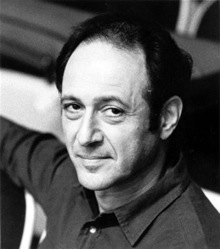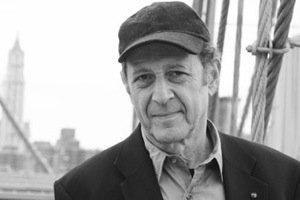“He never seems to be resting on his laurels; he’s constantly searching, constantly creating new stuff,” testifies the 30-year-old Sliwinski, whose four-member ensemble, So Percussion, will present an all-Reich program at Stanford’s Dinkelspiel Auditorium on Jan. 9.
“You have to keep up with him. He’s always a step or two ahead of you.”

The Quartet, which received its world premiere in Budapest earlier this month, expands Reich’s palette as his first-ever composition for a percussion quartet, and his first involving five-octave marimbas and vibraphones. “For most of the piece, the marimbas [played by Sliwinski and Josh Quillen] are creating a bed of groove-and-rhythm, and the vibraphones [Jason Treuting and Eric Beach] are playing these very tight canons. ... There’s no electronics or tape or any other elements.”
The rest of the Stanford Lively Arts program will serve up a fascinating array of Reich’s earlier pieces, most of them now minimalist classics: Four Organs (1970), Drumming-Part I (1971), Clapping Music (1972), Music for Pieces of Wood (1973), and Nagoya Marimbas (1994).
The titles of the pieces indicate the variety of Reich’s creations and the versatility of So Percussion's players. The ensemble will showcase its wares earlier in the week in performances and discussions at the Community School for Music and Arts in Mountain View (Jan. 6), and at a matinee for local schoolchildren at Stanford’s Memorial Auditorium (Jan. 7). Reich will appear with his videographer wife and sometime collaborator, Beryl Korot, at Stanford’s Pigott Theater, also on Jan. 7, and will join So Percussion in Clapping at Dinkelspiel.
Sliwinski credits Reich, along with John Cage and a handful of other composers, for having expanded percussionists' roles in concert music, so that now they can be “up front, driving the bus” instead of relegated to background effects. Reich also “made it OK for cyclical grooves and looping and repeating rhythms to become an element of contemporary classical music.” After doing field research in Bali and West Africa, Reich adopted a communal approach to ensemble music-making, which has deeply affected the structure of So Percussion and other groups of younger musicians, and has posed an alternative both to what Sliwinski refers to as the “hierarchy” of the traditional string quartet and to the “sort of sacred atmosphere of New Music as this rarified art form.”

